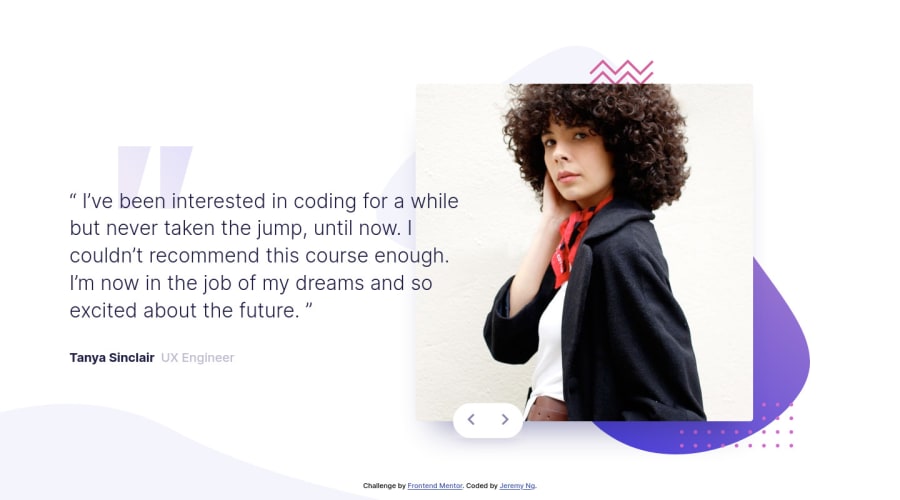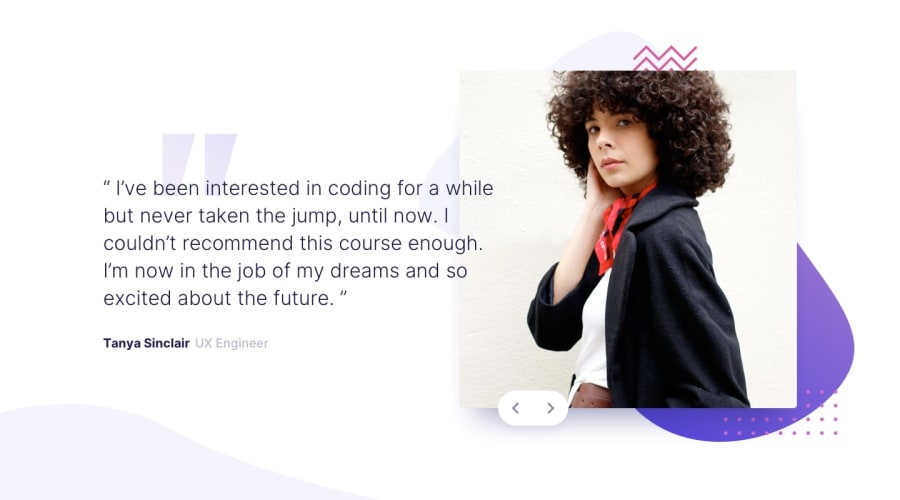
Design comparison
Solution retrospective
Update as of 3/17/2021:
- d228e10 2021-03-17 | fix: control buttons weren't sticking to the bottom of the image (HEAD -> master, origin/master)
- 2c4dc1d 2021-03-16 | chore: added new vendor prefixes as needed
- dd347b4 2021-03-16 | fix: the buttons were being scaled upon hover instead of just scaling up the underlying svg
- 086b46c 2021-03-16 | fix: brought back the translateX transformation and added hidden overflow to get around the extra spacing
- e09e2e5 2021-03-15 | fix: it turned out it was the transform: translateX that was pushing my other carousel items out of frame
- 5fd154d 2021-03-15 | fix: redid js back to the original prev and next system
- 2620cdb 2021-03-14 | fix: reduced transition from all to transform & opacity so the viewport change wouldn't transition
- d868be6 2021-03-14 | fix: removed hidden overflow from the image container as it was cutting off the box shadow
- 1317e70 2021-03-14 | fix: made the image container padding fluid so it scales
- caf3b97 2021-03-14 | fix: changed the mobile height by accident last time, updated the correct height nwo
- 1ee1c7d 2021-03-14 | fix: applied a fluid height to the image container so the buttons will scale and stick to the image
- cb0d609 2021-03-14 | fix: image wasn't scaling down along with the bg image
- 35feb9e 2021-03-14 | fix: the image container being too small in mobile viewport
- 1023987 2021-03-14 | fix: added a max-width to the image as it was bigger than the container
- f81d51d 2021-03-14 | fix: text section now displaying properly even without relative position
- 6c8a517 2021-03-14 | fix: removed display: none as that breaks the animations
- 6001dc3 2021-03-13 | fix: redid scripting to be simpler
- 5159bc4 2021-03-13 | fix: issue with footer overlapping over the content
- cb715d5 2021-03-13 | fix: removed redundant initial class from html and styles
- 092b89c 2021-03-13 | fix: added display: none to slides that aren't active to remove them from the DOM altogether
- 7d666c0 2021-03-11 | fix: redid the carousel images so the other images on standby now stack on top of one another
- 2320c88 2021-03-10 | Merge branch 'master' of https://github.com/lanechanger/fem-coding-bootcamp-testimonials
|
| * cd46c8b 2021-03-03 | fix: there was an issue with vercel deployment with .JPG vs .jpg - | 9a2a582 2021-03-10 | refactor: updated testimonial's html tag to blockquote
- | eb1444a 2021-03-10 | fix: fixed an issue with the buttons caused by having hidden overflow on the carousel controls class
- | cd19d2a 2021-03-10 | fix: changed articles and sections to div and removed button types |/
3/3/2021 Hi,
This is my first project using javascript and I feel like this has been way harder than other Newbie challenges, this one really kicked my butt!
I mostly based the carousel implementation on this: https://medium.com/@marcusmichaels/how-to-build-a-carousel-from-scratch-in-vanilla-js-9a096d3b98c9 But I ended up commenting out the animation as it was kind of messed up.
If anyone has an even better resource for implementing a carousel please reply with one, I would love to check it out.
Thanks! Jeremy
Edit: I just noticed the accessibility and HTML reported issues as well, I'll have to take a look tomorrow
Community feedback
Please log in to post a comment
Log in with GitHubJoin our Discord community
Join thousands of Frontend Mentor community members taking the challenges, sharing resources, helping each other, and chatting about all things front-end!
Join our Discord
